Blog 10:
Reflection is a key component to furthering one’s growth and development, especially when it comes to education. When reflecting back on my first blog post about the expectations I had for this course, I feel as though they were all met. I learned a significant amount about different cultures and how each and every culture has their own way of perceiving and expressing emotions. Understanding how people tend to deal with issues based on their culture can help me in the future when trying to pick the best course of treatment. This course has furthered my belief that it’s not just about how the brain operates, but it’s also about sociological aspects that detrimentally impact people’s lives. Academically, I’ve grown as a better writer throughout this course, and if taken again I would be sure to complete all the writing assignments more extensively. Above all, learning how to improve my psychological writing skills will help me professionally when I go to write reports on cases or patients, wherever I may end up. Writing is truly an essential asset to have, no matter what field a person is going into, and I’m grateful I continue to have professors that constructively build my skills through every assignment.
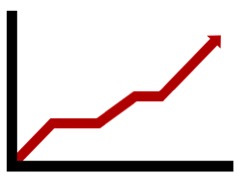
https://pixabay.com/en/chart-red-arrow-growth-arrow-red-2741952/
I chose this image to represent my academic growth throughout this course because from where I started, I continued to grow in my writing and studying skills while occasionally hitting some plateaus. I also chose it because I like how the arrow is continuing, which I believe represents my future academic growth throughout the course of my life.
Blog 9:
I’ve gotten a lot more out of this course than I originally thought I would in all honesty. Throughout my time in college I have taken multiple courses that involve diverse communities and how their lives are different because of it. This course, though, came from another perspective that allowed me to open up to a different point of thinking when it comes to diverse cultures. The top three things that I have learned so far in this course include how Disney movies how changed their messages to society’s evolution, the Self-Determination Theory and how it relates to my life personally, and that people in some cultures may not feel sad or express sadness in situations where other cultures would react completely opposite. I found that there was a connection between blog 8 and module 7 archive post, as it made me realize how emotions are socially differential in each culture and the interpretations of other people. Another connection I made with this course was with another course I took called Diversity Issues in Human Services, which focused on multiple diverse populations and how best to work with each since not all cultures, ethnicities, sexualities, etc. deal with problems in the same manner.
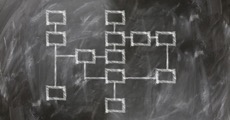
https://pixabay.com/en/organization-chart-2556925/
I chose this photo because I used BlackBoard to help me look back at material and past courses I’ve taken to compare them, and also it shows a flow of organizational steps which is similar to what I did!
Blog 8:
I’ve noticed many cultural differences in how people express themselves, particularly in their faces and if they are outwardly responsive at all. American’s have the tendency to be overly expressive, especially when trying to let people know that they’re actively involved with the conversation. When recruiting for an organization I’m in, conversations that I held with most of the women interested in joining were significantly more involved with their emotional responses in their mouth, eyes/eyebrows, and hands than those uninterested. When observing how my friend’s mother who grew up in Lebanon her whole life responds to emotions, it was noticeable that there is very little facial movement at all. Both of these examples of behavior aligns with how I expected the different cultures to respond, as American’s are emotional and Lebanese women culturally are unable to express emotions the same way. Cultural display rules help explain these experiences as well, since my friend’s mother grew up in an Islamic family that followed their beliefs strictly. Women from middle-eastern Muslim families in comparison to American women have very different gender expectations followed and ability to express their opinions or beliefs openly.
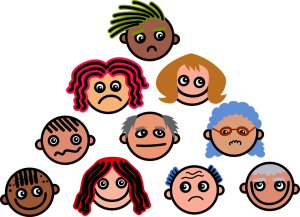
https://pixabay.com/en/cartoon-faces-expressions-emotions-1769064/
I chose this image to represent that different emotions and expressions of those emotions occur in varying degrees in all types of cultures.
Blog 7:
I believe that fairy tales do tend to reflect a shared set of cultural norm and values that are current during the time of its creation. The themes and central messages of fairy tales have evolved over time, from princesses being focused on finding true love such as in Cinderella or Sleeping Beauty, to princesses now being more focused on themselves and saving the day without needing to fall in love such as in Moana or Frozen. Cinderella and Sleeping Beauty were made decades ago during a time when the cultural norms and values in America involved the woman being at home more taking care of the family and making sure their man was satisfied. Moana and Frozen were released in this past decade, when women don’t feel such a dire need to find their one true love. Many women today have more than just love involved in their idea of happily ever after. The impact that main characters have on a young audience when exemplifying more egalitarian roles can be life changing in some ways, as representation and empathy to challenges one may face can bring hope and understanding into lives. Seeing Moana take on the great ocean while facing many adversaries along the way, but still being able to save Mother Earth without having to fall in love or needing a man to complete the job shows young girls that they are strong enough to take on challenges. A main character that I could identify with in some ways that has positively influenced me is Grace from the movie Short Term 12 (2013). This character showed me that even though I’ve gone through some hard times in my life, I can still be alright and use my pain and experiences to help others one day.
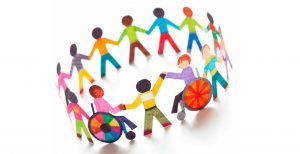
https://revistavive.com/inclusion-educativa-necesidades-educativas-especiales-nee/
I chose this image because it shows a widely diverse group of people being able to come together to hold hands and include one another respectfully.
Blog 6:
Fulfilling my academic needs for autonomy, competence, and relatedness in relation to the Self-Determination Theory (SDT), I try to do it in a number of ways. Being in control of my life and behaviors is important in my life, so for my academic autonomy I make sure my class schedule is on my terms and to where I will be able to complete assignments in a timely manner. For academic competence, I work hard to learn the material in each course since the knowledge I gain throughout college will impact my future. Finally, for academic relatedness I try to integrate and recognize the information from my courses in my daily life. This not only helps me understand the material in a different manner, but it also will help me to not be ignorant and speak more confidently in discussions related to certain topics.

https://pxhere.com/en/photo/1452869
I chose this image because I feel that it relates to how I fulfill my academic needs by working to connect all the pieces necessary to make sure I get the best education.
Blog 4:
Through the process of reviewing my test score, I was able to better understand the information that I didn’t at the time of the test and learn the knowledge correctly. Not only did I reflect on the questions that I got wrong, but I also reflected on the questions that I got correct and was unsure about during the exam. Throughout the modules I read over the PowerPoints and chapter readings, but more specifically in preparation for the exam I filled out the entire study guide over a week span using notes and the textbook. The results of the exam were very positive, with a score of 94/100. I’m happy that my study tactics worked out in my favor and I plan on doing something similar to it for the next exams, not only in this course but other courses I’m taking. Also, I’m hoping that my studying skills end up helping me as well as it did for exam 1 when I go to take the GRE in December! Fingers crossed.
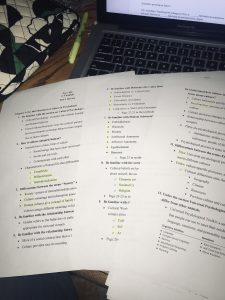
I chose this image of my detailed study guide to represent the work I put into preparing for the exam.
Blog 3:
The results of the NEO personality test were actually quite accurate in my case. For the category of Neuroticism I scored extremely high which was somewhat surprising, but after reading the description it made more sense. I do tend to have high emotions, extreme empathy for others, and if I’m really upset then I especially feel deeply. For the Extraversion category I scored moderately which was no surprise, as I do love to be around people but also need and enjoy my time alone. For the Openness classification I scored very high which made sense to me as well. My whole life I’ve always been ready to try new things, learn about diverse people and cultures, and open to trying to understand different ideologies and reasoning. In the Agreeableness section I scored averagely, with which I do agree with since I am warm and trusting but at the same time stubborn and competitive. Finally for the Conscientiousness category I scored low unsurprisingly, as I’m very easygoing and tend to be quite impulsive in many situations. This personality test is one of the most consistent test results to me personally that I’ve taken, and I’ve taken many!

https://www.wordclouds.com/
I chose to do a word cloud for this post and include most of the adjectives that were from the results of the NEO personality test.
Blog 1:
The outlined course objectives will significantly help me in the future by developing necessary skills I know I am going to need in order to be successful in my field of choice. My future career path involves helping people, and through this course I will gain more knowledge and a better understanding of the diverse cultures I may run into, and how these different backgrounds may have influenced who and where they are today. Past experience and upbringing plays a major role on a person’s development, and being able to adequately recognize these impacts will not only help me as a professional but also in determining how I can best help the person at hand. I’m hoping to gain these skills and qualities to develop as a human being and as a future human service professional. To ensure my success in this course I will be thorough in readings, discussion posts, and ask questions when necessary to make sure I understand the material in its entirety.
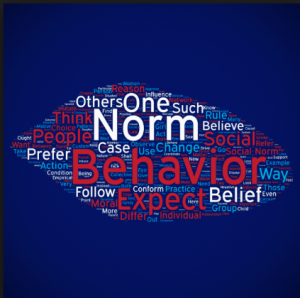
https://www.coursera.org/learn/norms
I chose this image because it contains a lot of the key terminology from the first chapter and that we will continue to use throughout the semester.